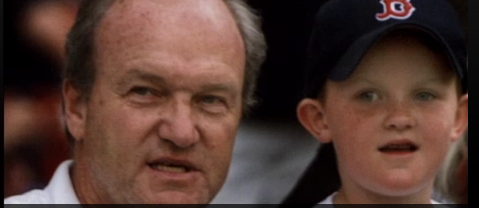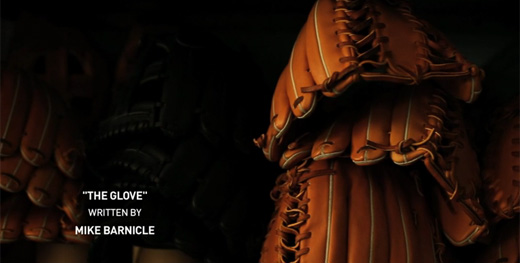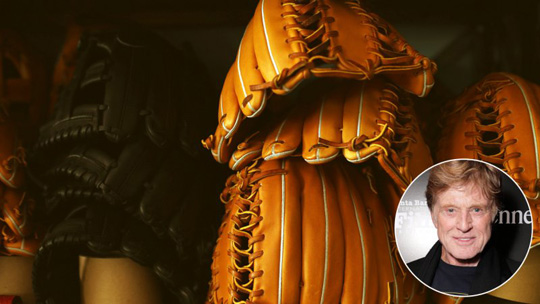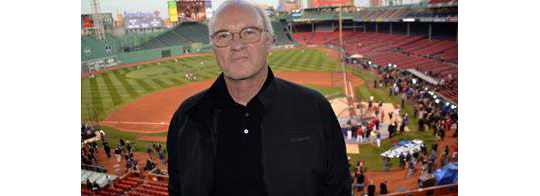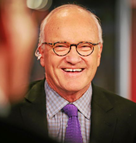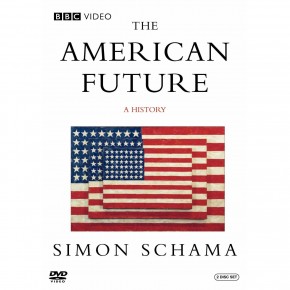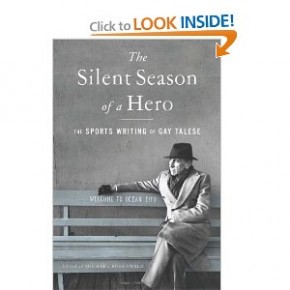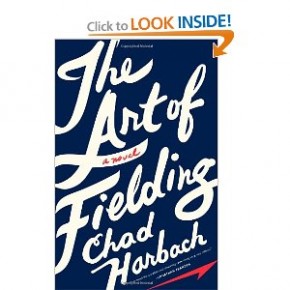“The Natural” star celebrates the Independence Day holiday with America’s pastime in a two-minute feature running during ESPN’s baseball doubleheader on Friday. Robert Redford played a baseball pitcher in the 1984 classic The Natural, and he has returned to the baseball field to narrate a new special to commemorate the 4th of July holiday. The Oscar winner read an excerpt from an essay penned by MSNBC’s Mike Barnicle that will run today during ESPN’s 4th of July major league baseball doubleheader. Produced by Mike’s sons Nick Barnicle, Colin Barnicle and colleague Jeff Siegel.
https://www.hollywoodreporter.com/news/robert-redford-narrates-fourth-july-716607
Put on a glove, watch a game, and the years fall away, time stands still, and the joy of baseball reminds you again of life’s eternal sweetness.
It could be in a bottom bureau drawer beneath some old tee shirts, sweat pants that no longer fit or laundered dress shirts purchased during the first Reagan administration and not worn since the second Clinton tenure. It might be on a closet shelf or perhaps in the attic, wrapped tightly in thick twine. Or maybe—if you’re an optimist, someone who never checks the date of birth on your driver’s license or are simply a bit delusional—it’s in the trunk of your car, ready to be used at the simplest provocation: a sunny day, a field, a driveway, a back-yard, really doesn’t matter.
It’s your glove, your baseball glove. It’s got a soul, a memory all its own, and a future that never fades because it has never let go of the grasp the past has on you and so many others.
It might be a hand-me-down relic, a Spalding fielder’s glove with the name “George Kell,” faded but still semi-recognizable, stitched on its pocket, the leather darkened by 60 years of use. Maybe it’s a catcher’s mitt from 1962, a MacGregor Yogi Berra or Del Crandall model. Or a Wilson outfielder’s glove from the ’70s just like the one worn by Fred Lynn or the great Clemente before he died. Might even be your latest purchase, a Rawlings RGG1200, nice, soft leather, nearly broken in, less than a year old, bought because you never know when someone might want to play catch.
The glove is like checking a calendar. It comes out of the drawer, the attic, the trunk of your car with the first tease of spring. Comes out and stays out with the arrival of baseball and Opening Day.
Go ahead. Put it on your hand. Wear it. Punch the pocket. Flip a ball in the air. Catch it. Shut your eyes and watch the years roll off like shingles from a roof battered by the winds of winter’s last assault. Wait a minute and the glove, your glove, will unwind the decades between a moment when your waist was smaller than your sleeve length and life’s small ambushes had not yet altered your game plan.
That’s one of the great gifts of this, the greatest of all games, baseball: it allows you, still, to lose yourself in a dream, to feel and remember a season of life when summer never seemed to die and the assault of cynicism hadn’t begun to batter optimism.
It is back for real this week, baseball. Returned to ball yards and constituencies as different as Los Angeles and Pittsburgh, as similar as Boston and St. Louis, as historic as Chicago and New York.
Baseball is a game that shouts “Slow Down” to America. Stop tweeting, texting, blogging, watching cable news, and obsessing about polls, lost planes, and focus driven politicians.
Baseball is a game that shouts to America: ‘Slow down!’
Baseball is a movable conversation across nine innings. It is eye contact with the person seated next to you in a park where the pitcher is separated from the batter by 60 feet, six inches or in a family room where a 60 inch TV screen hangs on the wall.
Almost everyone grows out of all the other games played earlier in life—basketball, football, hockey, soccer—the years and the calories taking their inevitable toll. So you sit and watch games involving athletes who are nearly seven-feet tall or who weigh 250-350 pounds and run “the 40” in fewer than five seconds.
But nobody really grows out of baseball. Go ahead. Do it. Put the glove on your hand. Flip the ball in the air and it’s 1958 and Teddy Ballgame is in the batter’s box, or it’s 1967 and ‘Yaz’ is dragging the Red Sox across September into the impossible dream of a world series. Catch it and you can still hit and still run and still stand in the infield or outfield, hands on your knees, waiting for the pitcher to throw a heater, a slider, a curve. A sandlot, a playground, a high school field … You own them all for that one moment.
And when you open your eyes, sitting there in Section 16 or your living room, the players look kind of like you, don’t they?
They’re not wearing pads or helmets. Sure they’re quick and obviously athletically gifted beyond description or even comprehension. But these guys, these ballplayers, they’re about your size, aren’t they? When you were younger? When you played? When you put your glove down on the kitchen counter a half hour ago in order to make a turkey sandwich for yourself? Yeah … they are you, kind of, sort of, once upon a time.
Baseball is the perfect antidote to one of the particular cultural poisons of the age: That we—nearly everyone—are so busy, so time crunched, so stressed, so worn out by the demands and disappointments of life, of the economy, of family issues that there is not a second to spare in the course of a day. We have cell phones, text messaging and email to minimize human contact, apps to deliver dinner, do a kid’s school assignments, grocery shop, get a movie, a song, a book, a car, anything at all. And we’re stressed? Please!
Listen to the voice of baseball. Listen to Vin Scully. Listen to the game itself. It is telling you to chill, relax, reorder your priorities, winter is behind us, put the heavy coat in the closet, go outdoors, wear short sleeves, enjoy the sunshine, enjoy life.
Pay attention to this, the greatest game of all. It is your life played across nine innings. It comes with hits, runs and errors. It is played by people who are rather isolated on the field—the pitcher, the shortstop, the center fielder—and when they make a mistake, an error, it’s there for all to see. But they do what you must do every day: Get back in the batter’s box and keep on swinging.
Get your glove. Baseball is back.
https://www.thedailybeast.com/articles/2014/03/30/the-timeless-beauty-of-baseball.html
MIKE SHARES MEMORIES OF FENWAY PARK
Thu Apr 19, 2012 2:50 PM EDT

Evelyn C. Savage
Our man Mike Barnicle has talked a lot and written a lot about Fenway Park over the years. Lately, he’s been talking a lot about the park’s 100-year-anniversary, which will be celebrated Friday, April 20th with a game against the Yankees that begins at 3:05 p.m. (the time the Sox began their game against the New York Highlanders). Hearing Barnicle discuss his first visit to the park in the mid-1950s is hearing his rite of passage story. It seems safe to say he views Fenway as his second home, if not maybe his first home.
I spoke with Barnicle this Wednesday about the big anniversary, his relationship with the park, why he doesn’t heckle the team during a game, if there’s any rival to Fenway, and whether it was his father or his mother that was the big baseball fan in his family.
Morning Joe: Why does Fenway hold such a special place in the hearts of not just Bostoners, but seemingly all New Englanders?
Mike Barnicle: I think, in large part, it’s because of the permanence of the facility itself. When you consider the fact that we live in a time now where people move almost relentlessly. Very few people live in the same house they move into when they’re married or the same neighborhood when they’re married. Very few people certainly live in the neighborhood they grew up in. We change all sorts of things in rapid time. We sit here in front of TV sets with clickers in our hands, and change channels. We change spouses and partners; divorces are epidemic considering to what the divorce rate was 30 or 40 years ago. All of these things that we’re used to today, these elements of change that are around us, to some people and maybe to most people at some level within them, can be kind of disconcerting. Like ‘Jeez, that place used to be a drug store when I grew up.’
MJ: And now it’s a parking lot.
Barnicle: Now it’s a parking lot or a high rise or a McDonald’s or whatever. And then you get to Fenway Park. And it is the same today in large measure as it was the first day you walked into that park when you were seven years of age holding your father’s hand. And there’s a sense of permanence to the ball park that gives people, I think, a feeling of security or a sense of sameness to the area; that gives a lot of people a sense of happiness. It’s still the same today coming up out of the subway stop at Kenmore Square. Walking through the square, up across the bridge on Brookline Avenue to Lansdowne Street. The light stands. It’s the same. The bricks are the same. And I think in an age of constant change and great change, I think that brings a huge measure of relief to people.
MJ: And it’s something you hand down from generation to generation.
Barnicle: Yeah. As your father or grandfather, depending on your age, took you 40 years ago, 60 years ago, whatever, however old you are, 20 years ago, you can take your son or daughter to the game today and then hopefully 20 or 25 years from now, they can take your grandchildren to the game, and it will be the same.
MJ: I don’t know the reasons why it has stayed where it is and parks like Yankee Stadium or Shea Stadium have not. Can you give a general primer why Fenway Park hasn’t moved in a 100 years, given that it’s a very busy, bustling area now?
Barnicle: There are a couple of reasons why it has remained where it is and remained pretty much the way it has always looked. The biggest reason right now is after the sale of the team in 2001. The debt service to build a new ball park in another area of the city – say down by the waterfront – would have been too heavy for the present ownership group to carry. They didn’t want to carry the debt service, having just paid a record amount of money for the team and for the ball park. They didn’t want then to transfer the debt service that they were already carrying to the increased debt service of construction for a new ball park. That’s one reason. That’s a financial reason, obviously.
But there’s another reason, and it is this: That one of the members of the ownership group, Larry Lucchino, who came in in December 2001, was the guy who built Camden Yards in Baltimore. And built it in the early ‘90s; I think it opened 20 years ago. It’s been open since 1992. Built it with an idea that a ball park around Camden Yards – the old railroad yards in Baltimore – would create, he hoped, the establishment of a brand new urban neighborhood, which it did. And the refurbishing and rebuilding of Fenway Park since 2001 has created a new urban neighborhood in Boston. It is now a very hot neighborhood and is continuing to grow hotter and will only increase in attractiveness to both residents and businesses. Because the ball park is a magnet. It is the single largest tourist attraction in Boston now and it’s not just a six or seven-month-a-year facility. It’s open all year round. You can have a wedding at Fenway Park.
MJ: Have you been to a wedding there?
Barnicle: I have. I’ve been to bar mitzvahs at Fenway. It’s created a thriving, fairly young and affluent neighborhood around the ball park, which is something that did not exist prior to rebuilding the place.
MJ: And it is centrally located in the city.
Barnicle: That’s part of the magic of the park as well. If you’re there for just a few days in Boston, you can walk to the park. You can be staying around Boston Common; you could be staying with friends in Jamaica Plain. It’s easy to get there. It’s not exactly great to park around there, but what ball park is great to park around? You can get there fairly easily.
MJ: It seems safe to say you’ve done this many, many times in your life, but I have to ask about your memories of your first time at the park. And where did you sit in the park as a child? And where do you sit now?
Barnicle: The first time I went to Fenway Park was probably 1950. It was the early ‘50s, and it was my father taking me to the game. And what I have full retention of is of the electric sight of coming up the ramp on the first-base side (and it’s still the same sight today), and you come up into the splendor of green that you see in front of you. The lawn, the wall, the sun sparkling on both. And when you come up the same ramp today for a day game or night game, it’s still shockingly beautiful. At least it is to me. The ball park itself…where did I sit? We used to sit when I was a kid – tickets were obviously cheaper then – we’d sit in the Grandstand section. Maybe section 15 or 16, which is along the right field foul line.
But you know, things change. You go to work; you get lucky; you do well; you make a little money. Some people buy beachfront property. I buy season tickets. So, I have and have had for quite some time, ten season tickets in various locations around the ball park, all pretty good seats. The seats I sit in are right by the Red Sox dugout. And I’ve sat there for years.
MJ: Where you proceed to heckle the team all season?
Barnicle: You know what, not only do I NOT heckle the team, because I have an appreciation for how difficult that game is to play. But if you would watch me during a game — and please don’t — I only rarely show any emotion at all. Like standing up or cheering or clapping. I like to just watch the game. And I do not enjoy taking people to the game who want to talk about anything other than baseball and who don’t get the fact that, you know, ‘Hey, I’m trying to watch the game. You want to talk about what’s going on in the game, feel free. But don’t be talking to me about your hedge fund.’ But that would be very unlikely for me bringing a hedge fund guy to sit with. But you get the point.
MJ: So there’s a hierarchy of mental involvement when it comes to watching the game, and you like to focus is basically what you’re saying.
Barnicle: Yes.
MJ: If you’re going to Fenway for the first time, what are the rules of going to a game?
Barnicle: You should enjoy where you are, first of all. Because there’s not a facility like it in the country for baseball.
MJ: What do you mean by that?
Barnicle: The field is quirky in its arrangement. It’s not like a cookie cutter field. It’s not like 325 down the line at left, shoots out to 345 at left center, 410 in center, 345 in right center, 325 down the line at right. It was designed at an earlier, easier time. You’ve got the famous wall, and they post it at 310, but it’s probably about 300 feet from home plate. Not a big distance for a major league hitter. The wall was put up to prevent mud slides, really. The park was built on a landfill. There’s a crazy, cookie-cutter design to center field. There’s a corner of the bull pen that makes it one of the deepest center fields in the major leagues. It’s got a wide, horseshoe-shaped right field that if the right fielder misses the ball on the bounce, the ball can carom like a pinball all the way around. You can get yourself an inside-the-park home run. It’s interesting. And it’s different from most parks.
MJ: Is it safe to say Fenway is your favorite park? Is there a rival in your mind?
Barnicle: Wrigley Field [in Chicago] is pretty nice. Almost as old. Where the Cubs play with the vines on the wall on left field. And it’s in a great neighborhood, as well. Like with Fenway, it’s a magnet for a younger crowd. That’s a nice ball park. Some of the newer ball parks are really nice. The ball park in Pittsburgh is a spectacular ball park. Again, it’s right downtown. The Denver ball park, built in the LoDo area, completely brought back that neighborhood. San Francisco has a fabulous ball park. It’s right down in the Embarcadero. You can walk there from downtown San Francisco.
And there’s a difference, too. If you want to play baseball, you want to play in a park and not a stadium. It’s nothing but rhetorical, but a stadium symbolizes something larger. You’re going to play football in a stadium. A park connotes someplace you come, it’s smaller and more comfortable.
MJ: What do you remember about the team when you first went to a game?
Barnicle: I can remember many specific players. Jimmy Piersall, Number 37. Sammy White, the catcher, Number 22. Ted Williams, Number 9. Harry Agganis, Number 6, died of pneumonia in Santa Maria hospital in Cambridge after a road trip in 1955. I can remember all of that. I can’t remember what I had for breakfast this morning, but I can remember that.
They were a dreadful team then. Always finished in fourth place. There was an A-team American League division then. There were only 16 major-league teams. I could remember most of the teams. Most of the teams that played the Red Sox would stay in the Hotel Kenmore in Kenmore Square. You could camp out and get autographs because the players would just walk the 150 years to the ball park. Every team stayed there with the exception being the Yankees. They stayed at the old Statler Hilton in Park Square in Boston. I can remember vividly much of that period of time.
MJ: You mentioned your father taking you to your first game. What kind of a Red Sox fan was he when you were younger?
Barnicle: He was not a huge fan, turns out thinking back on it. He took me because I loved baseball.
MJ: So you asked him to take you?
Barnicle: Yeah. He liked baseball, but he was nowhere near the baseball fan that I was then and obviously became. He was like most people his age in that era. Newspapers cost two cents each, so we used to get six or seven newspapers a day in the house. And you’d follow almost everything through the newspaper, baseball included. My mother was a big baseball fan. She loved Ted Williams. She would sit on the front porch of our home, with the radio on and listen to the ball game.
MJ: Would she go to games with you when you were younger?
Barnicle: No. We didn’t have a lot of money. And it was a huge treat. And I assume, looking back on it, that a few economic tricks took place for us to be able to go to a ball game.
MJ: When you were younger, how many games would you be able to see in a season?
Barnicle: I didn’t go to that many when I was that young. But I was also lucky in that my uncle played major league baseball for the then-Boston Braves (now the Atlanta Braves), and he was a pitcher for the Boston Braves. And so growing up, my cousins and I had an entrée into that world that very few kids did. By the time I was 12 or 13, and given the ease of access to get to the games and the fact that they weren’t selling out, we went to a lot of games. And a lot of the guys that he played with, they were coaches on major league teams.
MJ: When did you start bringing your own kids to Fenway? Did you want them to be massive Sox fans at a young age?
Barnicle: Here’s the deal on that. I would take our two oldest boys to games from the time that they were five and six. And I would take them, first of all, because I was in charge of taking care of them on a particular day, so I’d take them to the ball park. And we would sit upstairs. And I never took them with the idea that I’m going to inculcate them. I don’t think you can do that. They are either going to like it or not like it, but I wasn’t going to force it on them. And luckily for me, they not only liked it, but loved it. They played it at a very high level throughout their young lives and still play it. They play hardball in a hardball league in the Bronx. One of them played a year of minor league baseball. They both played college baseball. And they do film stuff now, they have a production company for ESPN’s “Baseball Tonight.”
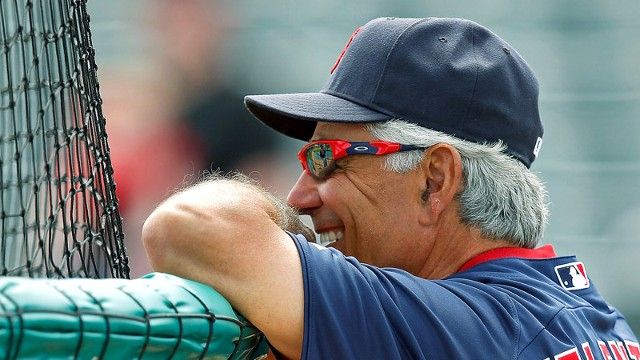
Sarah Glenn/Getty Images
Is Bobby Valentine really the guy to turn the Red Sox around?
Bobby Valentine needed a coffee.
It was five minutes to seven on a soft spring morning at JetBlue Park in Fort Myers, Florida, and the 61-year-old manager of the Boston Red Sox had just arrived in his office — a windowless room located on a long cinder-block corridor within a baseball facility built seemingly overnight in a state where high unemployment, low union clout, and Lee County official eagerness resulted in farmland being turned into a state-of-the-art ballyard in stunning speed.
“Forgot we had a night game,” he said. “I could have gotten here a little later if I remembered we were playing a night game today.”
“What time would you come then?” he was asked.
“8 a.m.,” he answered. “Kitchen’s not even open yet. I need a cup of coffee. One cup. That’s all I need in the morning. One cup to get me going.”
There was a coffeemaker on top of a hip-high steel file cabinet along the wall behind his desk. Valentine stood up, placed a coffee cartridge in the coffeemaker, and touched the “on” button with his index finger. Nothing happened.
“Jesus Christ,” he muttered. “Is this thing working?”
He pushed the “on” button again. And again, nothing. Then he moved the file cabinet away from the wall, removed the coffeemaker’s plug from the outlet, and put the plug into a second outlet. Still nothing.
“Goddammit,” he said. “That’s distressing.”
He hit the switch a third time and then hit the coffeemaker. Now he stood staring at it with the same look he’s given countless times to players who failed to hit a cutoff man or missed a bunt sign.
“I’ve got to get this thing working,” he said to himself. “Watch, I’ll get it working.”
“You sound like a know-it-all,” he was told.
“Hey,” he laughed. “That’s probably because I am a know-it-all.”
So, here he was, Bobby V, the pride of Stamford, Connecticut, greatest high school athlete in that state’s history, nine years out of the major league managerial loop, standing in his baseball underwear, cursing a coffeemaker, carrying all the baggage as well as optimism that has clung to him across a lifetime in the game.
“I’ve learned to not dwell on the last loss,” he pointed out. “I now prefer to think of the next win.”
This week he takes a team — the Boston Red Sox — into a season still in the shadow of a disastrous September collapse and a nightmarish offseason; the manager, Tito Francona, departed, followed by the general manager, Theo Epstein, amid a series of news stories that made the club appear more dysfunctional than the cast of Jersey Shore.
He has a permanent smile on his face and an iPad on his desk. There is a stack of unopened mail on a round table. There are several books next to the letters: People Smart by Tony Alessandra and Michael J. O’Connor, The Leader Within: Learning Enough About Yourself to Lead Others, by Drea Zigarmi and Ken Blanchard, and Thinking, Fast and Slow, by Daniel Kahneman.
“Kahneman,” Bobby Valentine notes. “He was awarded the Nobel Prize.”
So who is he in this, the spring of his 61st year, more than 40 of them spent in baseball? Is he, as a critic like Curt Schilling contends, an overmanaging control freak who eventually exhausts both players and the front office with constant tips on how to lay down a bunt, turn a double play, round third, load an equipment truck, make a sandwich, or select a wine? Or is he simply a guy whose high-wattage personality, eternal optimism, endless curiosity about multiple topics, love of the game, and substantial IQ and EQ (emotional intelligence) have him roaming across various facets of life as if each sunrise came with a buffet of big thoughts to be sampled or devoured? A guy who has managed to assemble all his experience into nuptials where instinct finally marries wisdom?
For years — before he was either banished, forgotten, or thought to be too electric to handle — Bobby Valentine played and managed games from eye level. And while he remains unafraid to grade his new club, his absence from the scene — as a true participant with a number on the back of his jersey — seems to have brought a caution about where his rhetoric might lead when conjecturing about the record and road ahead for the 2012 edition of the Red Sox.
Through the time in Texas and New York, he was a man of the moment. Always there with something to say about nearly everything and everyone; 162 games, 162 potential chances for combustion. But life in Japan and working for ESPN did something that probably surprised even him: It broadened his horizons, exposed him to different styles of management and leadership — and Valentine is a sponge for anything he thinks might give him an edge. He absorbed all of it and now takes those lessons to this job, this team, and a town that has been waiting in judgment since Evan Longoria’s home run landed in the left field stands last September, cementing a historic Red Sox collapse. And he is indeed ready to be judged, booed, cheered, second-guessed constantly, and have the F-word used as an adjective before his last name if the Olde Towne Team doesn’t come out of the gate playing .800 baseball.
“I understand expectation and I understand there’s only so much you can do about the perceptions others have about you,” he says. “Actually, there’s not much you can do. But I’m older now; I’m more interested now in building my character and not my reputation. That wasn’t always the case, though.
“I don’t really get concerned or caught up with what people think of me anymore. That’s reputation. I know that sounds like a line, but it’s a fact. I try to do what’s right as often as possible … that’s character.”
First time he got fired, he was about 15. He was working in a clothing store in Stamford called Frank Martin and Sons.
“I was selling clothes,” he recalls. “I guess I wasn’t very good at it, so I got fired. I was surprised, but I wasn’t crushed.
“I got fired in Texas. Got fired in New York. I survived. Got through it. It’s all part of life’s lessons, and I’m still learning. Hopefully, every day.”
Now he finds himself back at work, back in uniform, in a market that can often feel claustrophobic. Since 2004, when the Red Sox beat the Yankees in an earth-shaking, universe-altering, come-from-behind playoff series for the ages and then, seemingly as an afterthought, won the World Series, too, “The Nation” greets each season with high expectations and low patience. Valentine was hired during a winter of chicken-and-beer tales, and each new story and every day only seemed to add to the clamor and anger that came with the collapse.
“I don’t think I was hired to change the culture of the team,” he says. “I don’t think there is a culture that needs to be changed. I see a group of players, very good players, who know how to play the game and play it very well.
“Now, the culture of the game itself,” he continues, “well, I do think there can be some changes, some adjustments if you will, that I’d like to help happen. Maybe a little reversion to Baseball 101.
“Here’s what I mean: I’ve noticed that across the last five or 10 years in the game there seems to be a growing tendency to wait for the home run. And I think that’s dulled the senses a little bit, the baseball senses. And I don’t think that waiting for the home run to occur is fulfilling enough for a baseball player.
“Baseball players know instinctively that there is much more to this game. I walk around the locker room and I see Adrian Gonzalez and Dustin Pedroia and Jacoby Ellsbury sitting around talking with Dave Magadan, talking about baseball, talking about all the little things that make up the game, the things that help a team win, things other than the home run, and it makes me happy. They get it.”
And Valentine got it, too, got the one thing he thought he might never get again: the chance to manage another major league team, to measure his day by innings instead of by wristwatch, to think of what he might want to do in the top of the eighth during the bottom of the third, to live and breathe every moment from eye level in a dugout instead of off a TV monitor in the press box, to again be the real Bobby V rather than Bobby Valentine, analyst on Baseball Tonight, former manager of this club or that one.
He is semi-fluent in Japanese. He is a gourmet cook, a ballroom dancer, inventor of the wrap sandwich, a consumer of Malcolm Gladwell’s books as well as sheet after sheet of sabermetrics; he has been fired by George W. Bush, worn a disguise in a dugout, colored his hair for TV, and never, not once, missed an opportunity to grab life with both hands each and every day.
He is Bobby Valentine, back in the game, back in the one place where he feels most at home, most comfortable: a dugout, with a lineup card in his grasp, a field in front of him, and a long season of hope and opportunity ahead with one objective, the single item that has driven him through the years.
“The win, baby,” Bobby Valentine said. “The win.”
Globe Columnist
July 20, 2011
Next time you feel like ripping Terry Francona, try to remember that the man has a lot on his mind. The manager’s son, Nick Francona, a former pitcher at the University of Pennsylvania, is a lieutenant in the United States Marine Corps, serving a six-month tour, leading a rifle platoon in Afghanistan. Twenty-six-year-old Nick is one of the more impressive young men you’ll ever meet. In a terrific piece for Grantland.com, Mike Barnicle asked Terry Francona how’s he doing as the dad of one of our soldiers at war. “I’m doing awful,’’ answered the manager. “My wife’s doing worse. I think about it all the time. Worry about it all the time. Hard not to. Try and stay away from the news about it. Try not to watch TV when stories about it are on, but it’s there, you know? It’s always there.’’
Two Interviews. Hard questions. Figuring out the partnership of Terry Francona and Theo Epstein, one of the most successful collaborations in baseball.
POSTED JULY 10, 2011
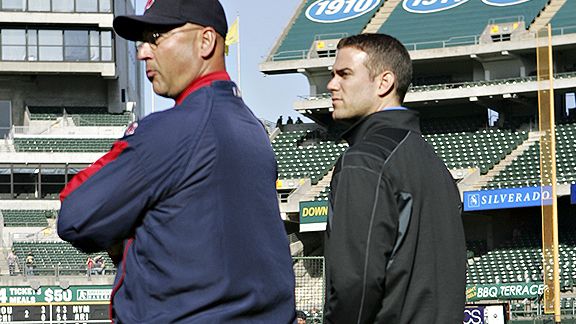
Tito Francona is tired. He is sitting at his desk in the manager’s office located at the far end of a small locker room in a ballpark — Fenway Park — approaching its 100th birthday.
He is wearing white uniform pants, a red hot-top and black spike-less athletic shoes, a Red Sox cap on his hairless head. And he is staring at a cluster of numbers on the screen of a laptop. The numbers run alongside the names of those players who are in the starting lineup of the Baltimore Orioles, the Friday night game about four hours away. The numbers are mathematical guidelines to the recent baseball past: What Baltimore players did against Red Sox pitchers. Where players are most likely to hit the ball if they connect with a curve, a slider, or a cut fastball.
“Can’t call ’em stat-geek stuff,” Tito Francona volunteers. “That’s disrespectful. There’s a lot of good information here, matchups, stuff like that. People work hard at this.
“I used to do these by hand,” he says. “Did it before all this math stuff and computers got so big. Did it without knowing it. When I managed the Phillies. Did ’em all by hand then. Would sit down with a pencil and a piece of paper and go through opposing lineups. Took forever. Now it’s all on these things, computers.
“And I suck at computers,” he is saying. “I’m a one-finger guy with them. I can get around on a computer OK using one finger but it’s not my favorite thing.”
“How you doing otherwise?” he is asked.
“Exhausted,” he replies.
“How’s Nick doing?”
“He’s OK,” said the Red Sox skipper, now in his eighth summer of employment with a club that dominates daily discussion in New England. “Guys in his squad in front of him on patrol got hit the other day. Tough day for him. Good thing though, he loves what he’s doing.”
The father now talking about the son: 26-year-old Lt. Nick Francona, United States Marine Corps, halfway through a six-month, one-day tour leading a rifle platoon in a long war that has forever ravaged a country locked somewhere in centuries past, Afghanistan.
“You OK?”
“Awful, ” the manager says. “I’m doing awful. My wife’s doing worse. I think about it all the time. Worry about him all the time. Hard not to. Try and stay away from the news about it. Try not to watch TV when stories about it are on, but it’s there, you know? It’s always there.”
The phone on his desk rings and Francona reaches to answer with his left hand, the right-hand index finger slowly scrolling through the Orioles roster on his laptop, his eyes narrowing behind glasses, looking, always looking for an edge.
“Yeah Theo, what’s up?” he says, pausing to listen to the guy on the line, Theo Epstein, the 37-year-old general manager.
“Yeah, I spoke to Buck Showalter about that … OK … Talk to you later.”
“Theo,” Francona says, hanging up, a smile creasing his weary face. “How do we get along? We got through eight years here together. We haven’t killed each other. I’d say we get along pretty good.”
The Major League Baseball season runs from early February, across spring, through summer, and concludes for most players and teams just as Columbus Day approaches. The season, longest of all the majors and quite exhausting, is a bit like dating a nymphomaniac; it demands daily performance. And in Boston the expectation is always to play toward Halloween.
In some aspects the game has changed irrevocably since a young Tito Francona, his father’s first baseman’s mitt on his hand, ran to sandlots in the small Pennsylvania town where his family lived. Managers today are provided tools to compete that were simply not available 20, even 10 years ago. They have access to a Niagara of information sometimes spoon-fed by a generation of front-office young people who have rarely played actual games.
“People, some writers I guess, get that wrong you know,” Tito Francona points out. “Theo and the guys working for him, they’re not in here six times a day with stats telling us what to do. We get stuff before a series begins and it’s valuable. I study it. I do.
“But it’s about more than numbers,” he says. “I remember a few years ago, we’re playing the Yankees on national TV and one of the kids in baseball ops — he’s not here now — says to me about five hours before the game, ‘You got Mike Lowell in the lineup?’ And I say, ‘Yeah.’ And he says he doesn’t do well in the matchup with Chien-Ming Wang, who was pitching for the Yankees.
“I say to the kid, ‘So you don’t want me to play him?’ And he says, ‘Yeah’ and I tell him, ‘OK. Look over there. There’s Mikey Lowell’s locker. He’s over there. You go tell Mikey Lowell he’s not playing in a national TV game against our biggest rival ’cause your fucking numbers tell us not to play him. See what kind of reaction you get from him and then come back and tell me.’ Course Mikey Lowell played that game.
“That doesn’t happen a lot, though. It works pretty well, the numbers stuff and us down here.”
“What are the biggest differences between you and Theo?” Francona is asked.
“There aren’t a whole lot,” he answers. “We talk every day. It’s good. We’re not yelling ‘Shut the fuck up’ at each other either. He knows I value the input I get from him and the guys in baseball ops, but he knows my world down here in the clubhouse is different from theirs.
“I get it. He knows I get it. And he knows getting a player in winter is different from getting a guy ready in the seventh inning. In uniform you’re looking at today. Right now.”
Two different worlds. Francona and Epstein. They are characters out of a kind of baseball version of Upstairs-Downstairs the old PBS series about class and expectation. One is Ivy League. The other is Summer League. One grew up dreaming of baseball. The other played it, raised in a house with a father who made a living at it in the major leagues.
Terry Francona is 52 years old, a baseball lifer from New Brighton, Penn., where the median annual family income today is roughly $31,000. The town is 30 miles northwest of Pittsburgh, and it is a place where men worked factory jobs and women knew how to stretch every grocery dollar, day to day, week to week. He went to high school there, attended the University of Arizona, was a 1980 first-round draft choice by the Montreal Expos.
Theo Epstein, 37, grew up in Brookline, Mass., median annual family income, $120,000, in the shadow of Fenway Park. He went to Yale, was sports editor of the Yale Daily News, got a job as a summer intern with the Orioles, parlayed his energy and his instincts into a front office position with the San Diego Padres, came home to Boston when John Henry, Tom Werner, and Larry Lucchino purchased the Red Sox in 2001. Took over as general manager in 2003, a lifelong dream in his back pocket at age 29.
The other day Epstein was sitting in a conference room located in the bowels of the ballpark, in a space that used to be part of an old bowling alley before it and much of the rest of Fenway was renovated and rebuilt under the watchful eye of Lucchino and ballpark architect Janet Marie Smith. He is a confident, disciplined, self-contained young guy, cautious with language and body movement, always alert that in the crazed media atmosphere that surrounds the Red Sox, one dropped syllable or the wrong adjective could put thousands of talk-show callers into crisis mode. In addition to statistics, the semantics of baseball have changed, too, young front-office people far less reliant on one of the locker-room staples of the game: The F-Bomb.
“What do you think Tito said about you?” I ask Epstein.
“Ahh,” he says, “he probably said we worked really well together. That we understand each other and respect the differences between our two jobs, and that he knows I have his back.
On the walls of the conference room were several white-boards filled with names of high school and college players just drafted, along with others to be looked at in fall ball leagues. The future hanging right there. The immediate, game no. 89 on the march to 162, four hours away.
“Actually we’re like an old married couple,” Epstein adds. “I can usually tell from his facial expression what kind of mood he’s in. And there is an element of ‘his’ world versus ‘my’ world in the relationship, but we’ve learned to pick our battles, and as well as I know him he knows me too.
“Communication is different in the clubhouse than it is in a boardroom. The heartbeat that exists in the clubhouse … you don’t find that same type of heartbeat in the front office. There is a cloak of intensity in the clubhouse that doesn’t exist here,” the general manager points out. “There is a little more objectivity here in this office. We see the game at 10,000 feet. Tito sees it 50 feet away. Tito is looking at tonight’s game and those of us in baseball ops, a lot of the time, are looking at the next five years.
“His job is clear: Win tonight’s game. That’s his focus. Ours is that, as well, but the focus is also on the years ahead. That’s the inherent conflict between the two jobs, his and mine. It’s the subjective versus the objective.”
“What did you want to know from him when he interviewed for the job?” Theo Epstein is asked.
“That’s interesting,” he replies. “The big thing was what kind of relationship would exist? Would both of us be willing to say anything to the other without worrying about hurting feelings?”
“Right before I interviewed for the job with Theo, I called Mark Shapiro of the Indians. He’s one of my best friends in baseball and I asked him what I should do,” Tito Francona was saying earlier. “He gave me good advice I still use today. Mark told me, ‘Just don’t try and bullshit him.'”
“It’s become like a family relationship,” Epstein says. “You can’t bury things. We get them out in the open. I recognize the limitations of my view and my background but the two of us work well together.”
Epstein had just returned from lunch with his father, Leslie Epstein, who retired as head of the creative writing department at Boston University. The day before, a 39-year-old Texas firefighter sitting at a Rangers game alongside his 6-year-old son had died after falling out of the stands in pursuit of a foul ball tossed toward him as a generous gesture by Texas outfielder Josh Hamilton.
A dad’s dying young, at a ballpark, his little boy bearing eternal witness, clearly touched Epstein. He is sometimes labeled as cold and impersonal in his approach to whom he wants on or off his roster and what his club’s needs are, but what took place in Texas clearly triggered a reality he knows well: He is a young man living a dream.
“When I heard about that I wanted to have lunch with my dad,” Theo Epstein says. “What an awful story.”
In the manager’s office, Francona, his son Nick constantly on his mind, was attempting to lose himself in the landscape of a baseball game about to be played with the Baltimore Orioles.
“Theo knows,” Francona says with a slight laugh. “He knows he’s already looking at next year’s draft and he knows I’m down here looking at the seventh inning tonight. That’s the game.”
Mike Barnicle is an award-winning journalist. This is his first article for Grantland.
Mike Barnicle talks about the baseball gloves he’s had since 1954. “The Tenth Inning,” is a two-part, four-hour documentary film directed by Ken Burns and Lynn Novick that premieres this week, September 28 & 29th at 8pm ET on PBS. A new chapter in Burns’s landmark 1994 series, “Baseball,” “The Tenth Inning” tells the tumultuous story of the national pastime from the 1990s to the present day.
Mark Feeney from the Boston Globe says, “Mike Barnicle, who toiled for many years at this newspaper, serves as representative of Red Sox Nation. One of his great strengths on both page and screen has always been what a potent and vivid presence he has.”
Mike Barnicle talks about the Red Sox loss of 2003 to the Yankees and how it impacted his son, Tim. “The Tenth Inning,” is a two-part, four-hour documentary film directed by Ken Burns and Lynn Novick that premieres this week, September 28 & 29th at 8pm ET on PBS. A new chapter in Burns’s landmark 1994 series, “Baseball,” “The Tenth Inning” tells the tumultuous story of the national pastime from the 1990s to the present day.
David Barron of the Houston Chronicle calls Barnicle’s contribution to the film “perhaps the most valuable addition… (Barnicle) provokes simultaneous laughter and tears on the burden of passing his love of the Red Sox to a second generation….”
“The tale of the Sox bookend years of failure and triumph are given a personal connective thread by former Globe columnist Mike Barnicle, who frames the story through the eyes of his children and his late mother, who, Barnicle recalls, used to sit on a porch in Fitchburg, Mass., her nylons rolled down, listening to the Sox on the radio and keeping score on a sheet of paper.” — Gordon Edes for ESPN.com
Watch here: https://video.pbs.org/video/1596452376/#
